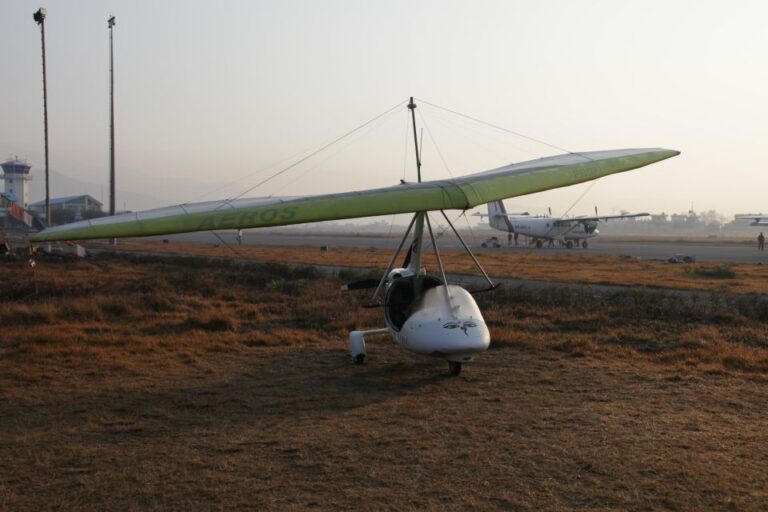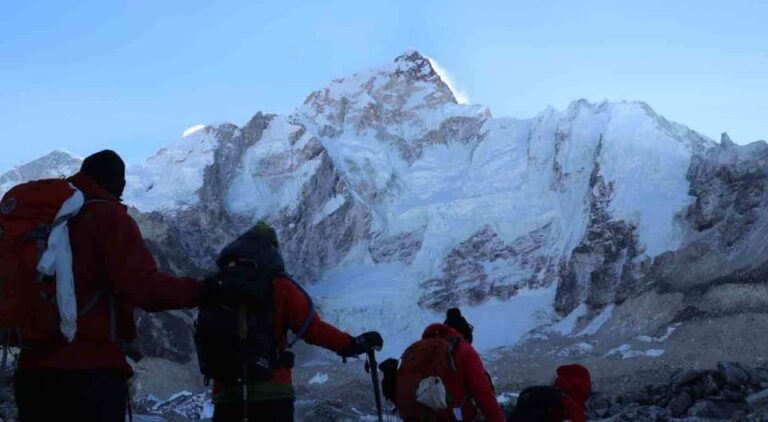Guide for Annapurna Base Camp Trek
In a world where getting lost in the beauty of the Himalayas is a welcomed predicament, the Annapurna Base Camp Trek 2024 beckons adventurers seeking a rendezvous with nature’s grandeur.
While the idea of navigating through rugged terrains and witnessing majestic peaks might seem daunting, fear not, for a comprehensive guide stands ready to unravel the mysteries of this trek.
From the ideal season to embark on this journey to the intricacies of cultural encounters along the way, this guide promises to equip trekkers with the essential knowledge and insights needed to make their Annapurna Base Camp Trek 2024 an experience to remember.
Good To Know
- Trek through stunning mountain landscapes and lush forests to reach Annapurna Base Camp.
- Experience Nepali culture with breakfast, witness Himalayan peaks, and explore charming hamlets.
- Enjoy the trek with a licensed guide, porter, and all-inclusive package for a hassle-free journey.
- Enjoy the beauty of Annapurna region, including Annapurna I and Machapuchare views.
It's also worth checking out some other tours and experiences nearby.
Best Time to Trek Annapurna Base Camp
For the best experience trekking Annapurna Base Camp, timing your adventure is crucial to ensure optimal weather conditions and breathtaking views of the Himalayan peaks. Understanding the weather patterns is essential, as the best time to trek is during the pre-monsoon (February to April) and post-monsoon (late September to November) periods when the skies are clear, and visibility is excellent. These seasons offer pleasant daytime temperatures, making trekking more comfortable.
Altitude acclimatization is also important to prevent altitude sickness. It’s recommended to acclimatize by ascending gradually, staying hydrated, and listening to your body’s signals. Taking these factors into consideration will enhance your trekking experience and allow you to fully appreciate the beauty of the Annapurna region.
Essential Packing List for Trekkers

Packing efficiently and thoughtfully is essential for trekkers embarking on the Annapurna Base Camp adventure in 2024. When preparing for the trek, consider the following packing essentials and be ready to face trekking challenges:
-
Layered Clothing: Weather can vary drastically, so pack layers to adjust to changing temperatures easily.
-
Sturdy Hiking Boots: Navigate through rugged terrains comfortably and protect your feet from potential injuries.
-
Quality Backpack: A durable, well-fitted backpack is crucial to carry essentials like water, snacks, and extra clothing comfortably throughout the trek.
Health and Safety Tips for Trekking
Navigating the rugged terrains of Annapurna Base Camp requires trekkers to prioritize their health and safety through mindful preparation and adherence to essential guidelines. Altitude sickness is a common concern due to the high elevation of about 4,130 meters above sea level. To combat this, gradual acclimatization is crucial, allowing the body to adjust to reduced oxygen levels.
Trekkers should also carry a basic first aid kit containing essentials like bandages, antiseptic wipes, and pain relievers for any minor injuries along the way. Staying hydrated, eating well, and recognizing symptoms of altitude sickness are vital. Being prepared for emergencies and knowing how to respond promptly can make a significant difference in ensuring a safe and enjoyable trekking experience.
Cultural Highlights Along the Trek
Amidst the towering mountains and lush landscapes of the Annapurna Base Camp trek, travelers are immersed in a tapestry of rich cultural experiences waiting to be discovered.
-
Local Traditions: Encounter the warm hospitality of local villagers in traditional Nepalese attire, offering insights into their daily lives and age-old customs.
-
Festive Celebrations: Join in the vibrant festivities of local festivals like Dashain and Tihar, where colorful decorations, lively music, and traditional dances fill the air with joy.
-
Cultural Workshops: Engage in cultural workshops along the trek, such as learning to cook traditional Nepali dishes or trying your hand at intricate local crafts, deepening your connection to the region’s heritage.
Accommodation Options on the Route
Travelers embarking on the Annapurna Base Camp trek can look forward to a variety of accommodation options that cater to different preferences and budgets along the route. For those seeking a comfortable stay, tea house options are prevalent, providing a cozy atmosphere and a chance to interact with fellow trekkers. On the other hand, camping alternatives are available for adventurers looking to enjoy nature and enjoy a more rugged experience under the starlit sky. Here is a breakdown of the accommodation options:
| Accommodation Type | Description |
|---|---|
| Tea Houses | Lodges offering basic amenities such as beds, blankets, and meals. |
| Camping | Setting up tents in designated camping spots along the trek route. |
Permits and Regulations for Trekkers
Accommodation options along the Annapurna Base Camp trek route cater to various preferences and budgets, ensuring trekkers find suitable places to rest after their daily adventures. When it comes to permits and regulations for trekkers, understanding the requirements is crucial for a smooth and enjoyable journey.
- Permit Requirements:
- Trekkers must obtain an Annapurna Conservation Area Permit (ACAP) and a Trekkers’ Information Management System (TIMS) card before starting the trek.
- Trekking Regulations:
- Respect the local culture and traditions of the communities along the route.
- Environmental Guidelines:
- Carry back all non-biodegradable waste and refrain from littering the trails to help preserve the natural beauty of the region.
Budgeting for Annapurna Base Camp Trek
For a successful Annapurna Base Camp trek, careful budgeting is essential to ensure a well-planned and enjoyable experience amidst the stunning Himalayan landscapes. When considering the cost breakdown, trekkers should account for permits, guides, accommodation, meals, transportation, and equipment rental.
Saving tips include booking in advance to secure lower rates, opting for local guesthouses for affordable stays, carrying water purifiers to reduce costs on bottled water, and packing energy bars and snacks for the trek to save on food expenses. Plus, sharing porter services with fellow trekkers can help split the cost.
Environmental Considerations and Responsible Trekking
Taking proactive steps to minimize the environmental impact of trekking in the Annapurna region is crucial for preserving its natural beauty and ecosystems. To ensure responsible trekking and sustainability, trekkers should consider the following:
-
Minimizing waste: Carry a reusable water bottle and avoid single-use plastics. Dispose of any waste properly in designated bins or by carrying it back to the nearest village for recycling.
-
Sustainable practices: Stay on designated trails to prevent soil erosion and damage to fragile vegetation. Respect local customs and wildlife by not disturbing or feeding animals along the trekking route.
-
Leave no trace: Pack out all trash, including biodegradable items like food scraps. Respect the environment by leaving it as you found it, preserving the Annapurna region for future generations to enjoy.
Here's a few more nearby tours and experiences we think you'll like.
Frequently Asked Questions
Is It Possible to See Wildlife During the Annapurna Base Camp Trek?
Wildlife sightings are possible during the Annapurna Base Camp trek, showcasing the region’s biodiversity. Conservation efforts and habitat preservation support eco-tourism initiatives, enhancing the experience with glimpses of native fauna like Himalayan Thars and various bird species.
Are There Any Traditional Ceremonies or Festivals That Trekkers Might Encounter Along the Route?
Along the Annapurna Base Camp Trek route, trekkers may encounter local traditions like prayer flag ceremonies and festive celebrations during special occasions. These cultural experiences add depth and richness to the journey through the Himalayan landscape.
How Do Local Communities Benefit From Tourism in the Annapurna Region?
Local communities benefit from tourism in the Annapurna region through economic impact and community engagement. Tourism provides employment opportunities, income generation, and cultural exchange, fostering sustainable development and preserving traditional practices, enriching both visitors and locals.
Are There Any Opportunities for Cultural Exchanges With Local People During the Trek?
During the trek, trekkers can engage in cultural workshops and homestay experiences, fostering meaningful interactions with local communities. These opportunities allow for a deeper understanding of Nepali traditions, lifestyles, and customs, enhancing the overall trekking experience.
What Are Some Lesser-Known Trekking Routes or Off-The-Beaten-Path Destinations Near Annapurna Base Camp?
Hidden trails wind through the Annapurna region, unveiling lesser-known treasures. Trek to mountain villages off the beaten path for authentic cultural experiences. Immerse in local life, traditions, and stunning landscapes beyond the usual routes.
Not for you? Here's more of our most recent tour reviews happening neaby
- Upper Mustang Trekking – 15 Days
- Everest Helicopter Tour: Experience the Ultimate Aerial Adventure of a Lifetime
- 12 Days Annapurna Circuit Trek
- Private Half-Day Off-Road Safari in Shivapuri-Nagarjun Park – Kathmandu
- Nepal Multisport Adventure Tour
- 7 Days Honeymoon Tour in Nepal
- Nepal Cultural & Adventure
- Bandipur Homestay Tour
- Tibet Tour With Everest Base Camp – FLY IN DRIVE OUT- 8 DAYS
- Day Hiking Near Kathmandu Valley.
- 4 Days Langtang Valley Short Trek
- 12 Days Everest Base Camp Trek in Nepal
- Lobuche East Peak Climb With Everest Base Camp Trek
- 4-Day Kathmandu Valley UNESCO World Heritage Sites Tour
- UNESCO World Heritage Site Tour in Kathmandu
The Sum Up
To sum it up, the Annapurna Base Camp Trek 2024 offers a truly unforgettable adventure through the stunning Himalayan landscapes. From the towering peaks to the charming villages, trekkers are treated to a unique and immersive experience.
With the right preparation, including packing essentials, health tips, and cultural insights, this trek promises to be a once-in-a-lifetime journey. So lace up your boots, pack your bags, and get ready for an unforgettable expedition in the heart of Nepal’s majestic mountains.





